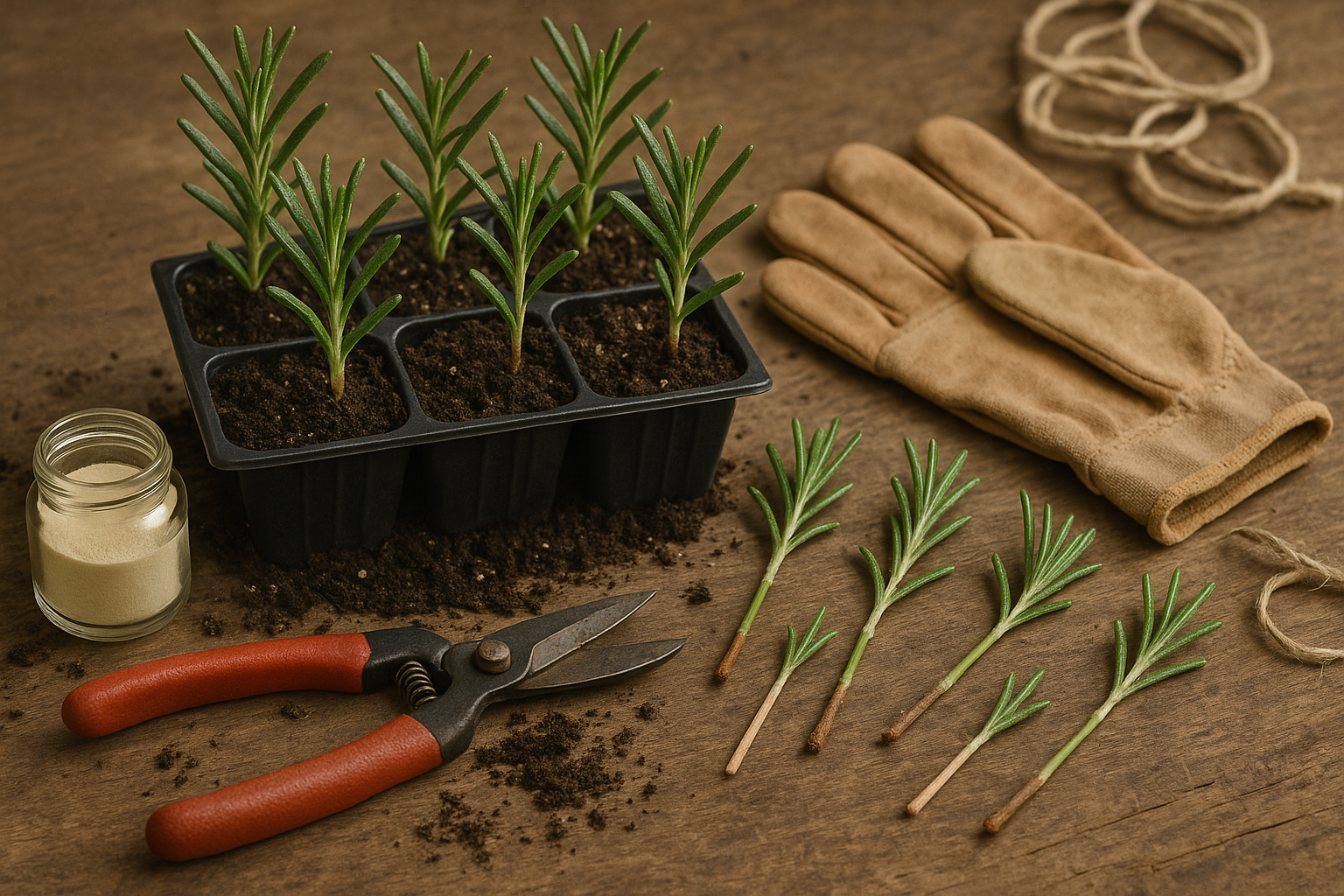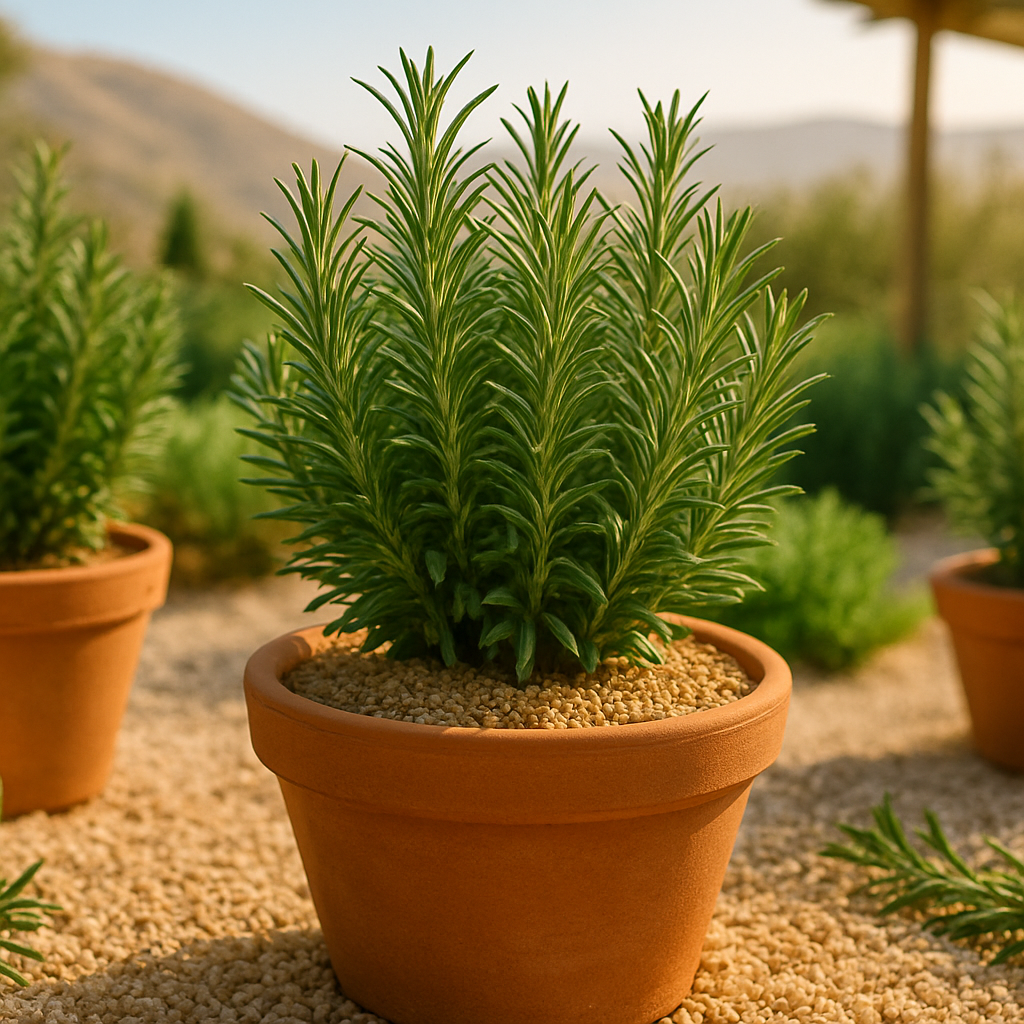Introduction
Rosemary in hot weather is a natural star, thriving where other herbs wilt. This tough Mediterranean native is bred for sun-soaked hillsides and dry spells, making it a favorite for gardeners in sizzling climates. While the summer sun helps rosemary flourish, growing it in hot climates comes with unique opportunities and some real challenges. Have you noticed your herbs struggling with brown tips, wilting, or even stunted growth once the temperatures soar? With rosemary, the right strategies can turn the heat into an advantage, producing fragrant, vigorous plants that become the pride of your garden.
If you dream of a lush rosemary bush that shrugs off heatwaves, you’re in the right place. In this article, you’ll discover how to prepare your soil to maximize drainage and root health, choose the best sun-drenched location, and master watering routines that prevent both wilting and root rot. We’ll also cover practical tips to shield your rosemary from extreme heat, control pests without chemicals, and keep it looking great all summer long. Whether you’re an experienced gardener or just starting out, you’ll find simple, real-world advice for growing rosemary in hot weather—and unlocking its full potential in your climate.
Choosing the Right Rosemary Variety and Sourcing Plants

When gardening in hot climates, selecting heat-tolerant rosemary varieties is crucial for success. Look for cultivars like ‘Arp,’ ‘Hill Hardy,’ or ‘Tuscan Blue,’ which handle soaring temperatures and intense sun with ease.
Visiting local nurseries is a great starting point—they often carry varieties already adapted to your regional climate. Don’t hesitate to ask the staff which types thrive in your area, or join local gardening groups for firsthand recommendations. If local options are limited, reputable online seed and plant suppliers offer a wide range, but always check reviews and ensure they ship healthy, pest-free stock.
When it comes to propagation, starting rosemary from cuttings is usually faster and more reliable than seeds, especially in intense heat. Cuttings will root more quickly, produce uniform plants, and bypass the slow, often unpredictable germination of rosemary seeds. Simply snip a few four-inch stems from a healthy parent plant, strip the lower leaves, and root them in moist potting soil—they’ll thrive with a little shade during the hottest part of the day until established.
Seeds can be tricky in hot weather, as high temperatures can inhibit germination and lead to uneven growth. If you do try seeds, start them indoors or in a sheltered spot, keeping the soil consistently damp but not soggy.
Ultimately, for fast results and sturdy plants in hot regions, cuttings or transplants from a trusted nursery are your best bet for a flourishing rosemary garden.
Preparing the Ideal Growing Conditions
Creating the perfect environment for your plants starts with choosing the right soil. For most veggies and herbs, well-draining soil is key—sandy or loamy soils enriched with organic matter like compost provide the nutrients and structure roots need to thrive while preventing water from pooling and causing rot.
If you’re working with heavy clay or compacted soil, consider mixing in coarse sand or plenty of organic material to improve drainage.
Location matters too: look for a spot that receives six to eight hours of direct sunlight each day. South-facing areas are usually ideal, but if space is limited or sun exposure in your yard is inconsistent, growing in containers can be a smart alternative. Just remember that pots may dry out faster and need more frequent watering.
Garden beds offer more stable moisture and temperature for roots, but if your ground soil isn’t up to par or you want a tidier space, raised beds are a great solution—they warm up faster in spring and drain excess water more efficiently.
Mulching is another easy win for your plants, helping to retain moisture, suppress weeds, and regulate soil temperature.
On especially sunny sites or balconies where heat buildup can stress roots, consider reflective surfaces like light-colored gravel paths or mulch to diffuse harsh rays, and use shade covers during extreme heat waves.
These little details add up and can make a huge difference in how well your garden grows, so it’s worth taking the time to prep your space before you plant.
Planting and Propagation Tips
To plant rosemary successfully, start by choosing a sunny spot—rosemary loves at least six to eight hours of light daily. If planting directly in the ground, space each plant 2-3 feet apart to give them room to spread and improve airflow. Dig holes twice as wide as the root ball but just as deep. Backfill with well-draining soil, and water softly but thoroughly.
For containers, use pots at least 12 inches wide with drainage holes. Add gritty soil or a mix labeled for cacti and fill to an inch below the rim.
When growing from seed, start indoors about 8-10 weeks before your last frost. Sprinkle seeds onto moist seed-starting mix, barely covering them, and place in a warm spot (70°F is ideal). Germination is slow and patchy, so patience is key: keep the mix just damp and expect sprouts in two to four weeks.
For a more reliable method, root cuttings by snipping 4-inch soft stems, removing the lower leaves, and dipping the cut end in rooting hormone. Place the cuttings into damp, gritty soil or perlite and cover with a loose plastic bag to retain humidity, but vent daily to prevent mold.
In hot climates, shade new seedlings from intense midday sun and water early in the morning to prevent drying. When transplanting seedlings outdoors or into bigger pots, do so in the coolest part of the day. Gently disturb the roots as little as possible, water immediately after planting, and use light mulch to help retain moisture and reduce the risk of heat shock.
Sunlight and Watering Strategies for Heat

Rosemary thrives on abundant sunlight, typically needing at least six hours of direct sun each day to stay healthy and aromatic. However, during intense summer heat—especially in areas where afternoon temperatures soar above 90°F (32°C)—it’s wise to shield your rosemary from the harshest rays. Placing the plant where it can soak up morning light but receive filtered shade in the afternoon—like near a pergola or under a loosely woven shade cloth—can help prevent leaf scorch and wilting.
Watering also requires special attention during heatwaves. While rosemary is drought-tolerant, it can quickly suffer if left too dry. Aim to water deeply but infrequently, allowing the top inch of soil to dry out between sessions. Early morning is the best time to water, giving the roots a good drink before temperatures peak and reducing the risk of fungal diseases that thrive in warm, damp conditions. To check if watering is needed, simply stick your finger into the soil—if it feels dry an inch down, it’s time to water.
To further prevent heat stress and accidental overwatering, add a two-inch layer of mulch, such as straw or shredded bark, around the base of the plant. This helps retain soil moisture and keeps roots cool. Be sure to avoid soggy soil since rosemary roots are prone to rot; always use well-draining soil and containers with drainage holes when growing rosemary in pots.
With these simple adjustments, your rosemary can not only withstand scorching temperatures but also remain lush and productive all summer long.
Ongoing Rosemary Care and Common Problems
Caring for rosemary during hot seasons means paying closer attention to its needs, as high temperatures can stress the plant and attract pests. Start with routine pruning: trim back stems after flowering and regularly snip any dead or leggy growth to keep your rosemary bush compact and healthy. This also improves air circulation and reduces the risk of disease.
Feeding is just as important. While rosemary is hardy and doesn’t need heavy fertilizing, an occasional top-up with diluted liquid seaweed or compost tea during active growing months will provide nutrients without overfeeding.
Health monitoring is crucial in the heat. Watch for signs of stress like droopy, yellowing, or browning leaves. Also, check if the soil has dried out to the point of pulling away from the pot—rosemary likes well-draining soil, but it shouldn’t become bone dry. If your plant looks wilted, water at the base early in the day and move potted plants to partial shade during peak afternoon heat.
Hot weather also brings common pests like spider mites and aphids, as well as diseases such as powdery mildew. To control these organically, spray with a solution of water and mild soap or neem oil, and keep foliage dry by watering only the soil, not the leaves. Regularly inspect the undersides of leaves for pests and remove any badly infested stems.
Mulching with gravel can help suppress soil-borne diseases while supporting good drainage. With these hands-on strategies, your rosemary can thrive through even the hottest months, providing you with aromatic leaves for months to come.
Harvesting and Using Rosemary from Hot-Climate Gardens
Harvesting rosemary in hot-climate gardens is both simple and rewarding when you follow a few best practices. Always use clean, sharp scissors or pruning shears to cut rosemary stems, snipping just above a leaf node. Never remove more than one-third of the plant at a time—this encourages healthy regrowth and keeps the shrub full and vigorous.
The best time to harvest is in the morning, after the dew has dried, when the oils are most concentrated for maximum flavor and aroma. After picking, rinse the stems gently and blot them dry.
To preserve your harvest, bundle a few sprigs together and hang them upside down in a cool, well-ventilated spot out of direct sunlight. They’ll dry fully in about two weeks. Once dried, strip the leaves and store them in airtight glass jars to retain freshness for months.
Rosemary’s bold, piney flavor is perfect in roasted meats, potatoes, butters, and breads—try infusing olive oil or vinegar with rosemary for a gourmet twist. Beyond the kitchen, weave pliant stems into fragrant wreaths, homemade sachets, or bath salts.
By treating your rosemary well and getting a little creative, your herb garden harvest can add flavor, scent, and beauty to your home year-round.
